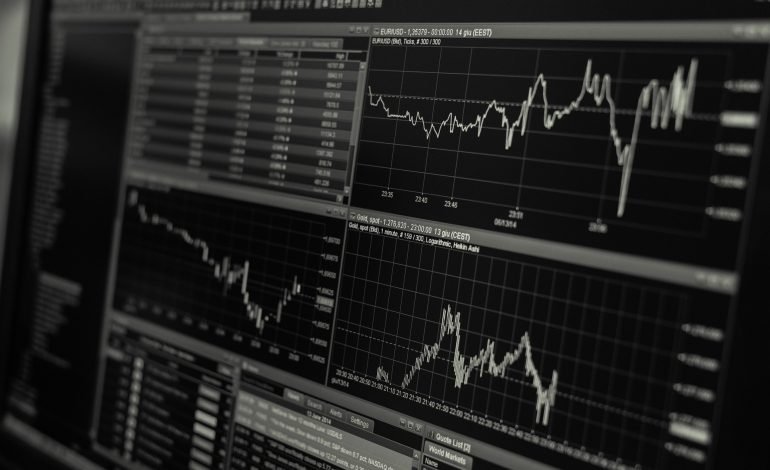History of the Indian Stock Market Since Independence

Since independence, the Indian stock market has overcome many obstacles and made significant improvements. The stock market, a reliable source of investments, has grown throughout time. But it is not considered as a simple world.
You need to have the strong knowledge of the stock market before investing in it. Investors are frequently taught to trust their judgment while making investments. This suggests relying on in-depth personal investigation rather than expert outside advice.
Millionaires have been made in this market, but there have also been significant losses. But have you ever wondered where India’s stock market came from? If yes, read the following points.
1963- UTI
Unit Trust of India was the first mutual fund in India and was established in 1963 by the RBI and the Government of India.
The first non-UTI mutual fund in India was established in 1987 and was called SBI Mutual Fund.
The first Mutual Fund Regulations, which applied to all mutual funds with the exception of UTI, were established in 1993.
1987 – Introduction Of Reliance Industries IPO
The initial public offering of Reliance Industries has a market capitalisation of Rs 17.5 lakh crore and is currently the largest listed business in India.
Reliance Industries took place in 1977 and is known as Reliance Textiles Industries Ltd. It was run by Dhirubhai Ambani.
Reliance sold its first set of equity shares to the general public in November 1977. Through this share, it allocates 2.8 million shares for Rs 10.
Dhirubhai Ambani is thought to have started an equity cult in India through this public offering. The Reliance Industries shares increased to Rs 2,855 per share after 45 years.
1986- Bombay Stock Exchange of India
The Bombay Stock Exchange of India was founded in 1875.This stock exchange was considered one of the oldest stock exchanges in Asia. It was invented before the Tokyo Stock Exchange opened its doors in 1878.
BSE got its permanent recognition from the Indian Government under the Regulation Act of 1956 on 31st August 1957.
All those looking to trade or invest have access to a clear and organised marketplace through the Bombay Stock Exchange. Investor education programs was introduced to educate new traders.
1988 – SEBI
The Securities and Exchange Board of India was founded in 1988 as a non-statutory organisation without legislative powers.
After the economy was liberalized, it was expected in 1992 that the capital markets would develop and require a regulatory body with the power to monitor and guide the markets on the right path.
In order to provide SEBI more power to protect the interests of investors in securities, promote market expansion, and uphold market laws, the legislature established the SEBI Act.
1992- Harshad Mehta scam
One of Dalal Street’s top stock market operators in the early 1990s was Harshad Mehta. In the Securities Scam of 1992, Harshad Mehta was accused of committing several financial offences.
It resulted in losses of more than Rs 4,500 crore. He participated in a significant stock manipulation operation, and his company brokered transaction deals between banks.
Following the disclosure of the Harshad Mehta scandal, the stock market dropped, and the BSE was shut down for a month.
1992- National Stock Exchange
After the BSE, the National Stock Exchange was established in 1992. The authority recognized it as a stock exchange on India’s capital markets in April 1993.
With the opening of the debt and cash market segments, NSE began operations in 1994. The exchange started trading and settling in dematerialized securities in 1996.
The same year, NSE introduced the Nifty 50 Index, a more expansive benchmark index than the BSE Sensex. It adhered to the same trading protocol, schedule, and settlement procedure.
In 2000, the exchange introduced internet trading, released index futures based on the Nifty 50 index, and listed those futures on the Singapore Exchange.
1992- FII Investment In India
India’s economic liberalisation has increased the chances for international companies looking to establish operations in the largest democracy in the world.
Global investors showed tremendous interest in the emerging economy, and the first foreign institution investment began in 1992.
1995- Electronic Trading System
The outdated trading practice of brokers completing trades on the trading floor was eliminated to increase transparency and ease of investing.
As technology advanced, trading was started on computers using terminals. This was the first instance in which an average investor had direct access to stock prices without using a broker.
It was the most significant move toward opening the market and fostering investor confidence.
1996 – Dematerialization and Demat Account
Sebi was fully digitalised with the launch of Demat accounts and the dematerialisation of shares. Before 1996, shares were held in person and maintained on paper with the shareholder’s name printed on them.
As a result, there was fraud, and it took weeks before the shareholder acquired the shares after a laborious transfer process.
Investors could now participate in the stock market more regularly and without worry because SEBI ensured that all shares were converted into digital form and kept in Demat accounts.
2000- Equity Derivatives
The introduction of equity derivatives was one of the most significant changes in the history of Indian capital markets.
Trading futures contracts at the NSE and BSE began with regulations that served the industry’s fundamental economic needs.
Better risk management, price discovery, and volume creation were made possible by derivatives in the Indian Stock Market.
2023 – NSE Becomes Fourth-Largest Stock Exchange
After 75 years of independence, all the main foreign investment institutions have established themselves in India’s mature financial markets.
NSE established only 30 years ago, can be held largely responsible for its success. In terms of the amount of contracts traded, it is currently the biggest stock exchange in the world.
A significant trade in terms of market value. Third-place position internationally in terms of equities trading volume, and beginning in January 2023, the first exchange to offer T+1 settlement.
Ending words
The Indian stock market has changed dramatically since becoming independent. Electronic trading systems have replaced manual paper-based trading, which was previously prevalent.
Today, people can trade online from the comfort of their homes due to technological advancements. Also, the Indian stock marketis among the biggest in the world. Furthermore, how trading and investing are done has undergone a revolutionary change due to technological improvements.












1 Comment
[…] the world of stock trading, knowledge is power. To succeed in the market, investors and traders must equip themselves with […]